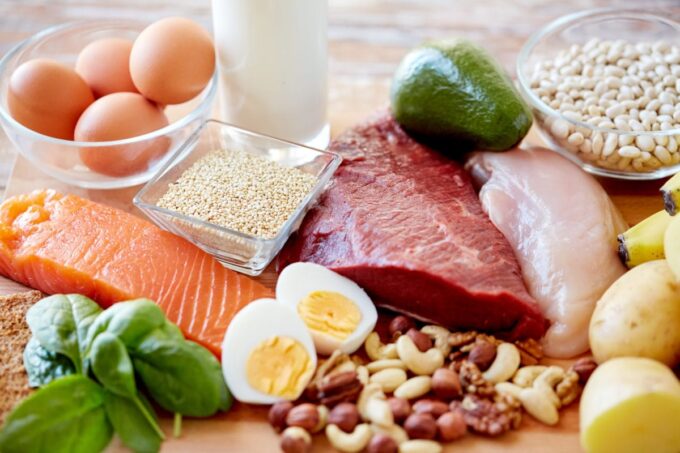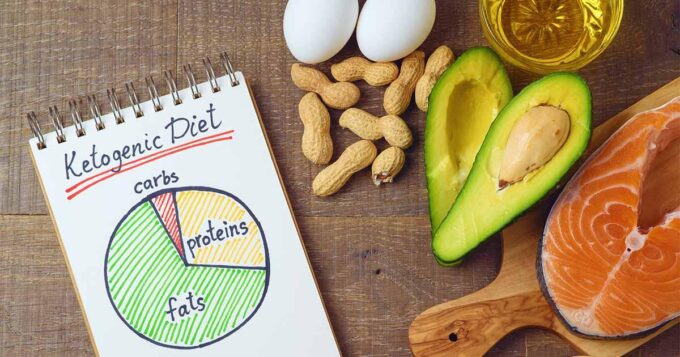We might be familiar with the phrase that goes like this: “We are what we eat.”
The nutrients from the food that we consume are the foundation of the overall wholeness of our bodies. This is especially true as our body starts aging. It may not be too late for some older adults to change the way or what they eat, but it is important to note that as we grow older, we should also think of the effects that can be accumulated over time by the variety of foods that we intake. So while you are still in the prime of your years, you better take a closer look at your health plan.
Let us also understand that as we age, the cells in our body do not absorb as many nutrients as they did when we were younger. Our metabolism slows down, so calorie intake should be lesser. Picking foods that has the best nutritional value is the best way to help our o bodies. If you belong to the older adult category, this article will help you choose healthy eats.
Eat a variety of nutrient-rich foods.

Source: familydoctor.org
As mentioned, the nutritional value is very important, so make sure that you can eat various foods. A colorful plate is more inviting to look at than a bland one. Following the food pyramid, a healthy plate should be comprised of the following:
- Lean protein includes lean meat (beef, veal, and any other type of meat that has a very low-fat quantity), seafood (preferably freshly caught ones), and eggs. An alternative source of protein can come from the legume family.
- Fruits and Vegetables are always a staple. Lean towards darker colored vegetables because they often offer higher fiber. For fruits, pick the ones with high flavonoids, which are powerful antioxidants like berries, grapes, red cabbage, onions, and kale.
- Whole grains such as brown rice, barley, oats, rye, corn and those used in whole wheat pasta have been shown to decrease or reduce the risk of obesity, coronary heart disease and even Type 2 Diabetes. They are naturally high in fiber, protein, Vitamin B, and have traces of Zinc, Iron, and Copper, among others.
- Choose low-fat dairy products like whole milk, Plain yogurt, cottage cheese, or any dairy alternatives like soy-based products like soy milk, soy cream, and soy-based cheese because those are rich in calcium, amino acids, iron, riboflavin, and Vitamin D among many others.
Follow serving size recommendations.

Source: unsplash.com
For you to maintain a good BMI (Body Mass Index), you should follow the recommended serving based on your age. You do not have to measure everything that you put in your stomach as long as you get the daily amount recommended for you.
Concerning this, when buying packaged or processed products, always check the nutritional label or content. Choose products with the smallest amount of sodium and added sugars because those are contraindicated for chronic inflammation like arthritis, a common ailment among older adults. Also, always remember to drain and rinse the canned beans or produce that you buy.
Examples of recommended serving for older adults are as follows:
- For one vegetable serving it can be: two cups of raw and leafy salad greens, one cup of cut-up vegetables, or one cup of 100% vegetable juice.
- For fruit serving, one fruit serving can consist of one medium whole fruit, half cup dried fruit, or one cup of 100% fresh fruit juice.
- For protein foods, five and a half-ounce of protein per day is recommended. An example of one ounce of protein equivalents can be one egg, one tablespoon peanut butter, a half-ounce of nuts, or a quarter cup of tofu.
Try the ketogenic diet.

Source: epilepsy.com
You can always turn to the Ketogenic (Keto) Diet as recommended by Nody, a health and fitness blog. The gist for this kind of diet is that fats IN and carbohydrates are OUT but of course by fats meaning the good kind of fats. It was even found that this type of diet may improve cognition in older adults as the high-fat, low-carbohydrate diet may improve brain function and memory.
Still, the correlation between this type of diet and the cognitive functions of older adults has yet to be supported by continuous research. Furthermore, according to the health and fitness blog mentioned, diabetes, unbalanced cholesterol in the blood, chronic inflammation of joints like arthritis, and lowered immune system are the most common diseases in older adults. These diseases were found to have improved through the Ketogenic diet and even reduced the incidence of the disease’s symptoms.
Drink enough water.

Source: unsplash.com
As an older person, water is an important nutrient for the body. So for the last tip, stay hydrated. Your choice of liquid also plays an important role in your nutrient intake, so of course, soda or any carbonated drink is a big no since they induce the bone to be brittle because of its acidic content. Green tea is preferable to drink since it has antioxidant properties and many more health benefits. According to some studies, Green and Black tea lower the risk of cognitive decline by more or less 50% in older adults. Coffee intake for older adults may also lower the risk or onset of dementia. However, both drinks should be taken in moderation since they have high caffeine content and too much caffeine overstimulates the nervous system, leading to jittery episodes and sleep pattern issues.
Final Words
In summary, receiving good nutrition is important no matter what age you are, more so if you are in the older population. In addition, keeping a well-balanced diet is an important part of wanting to age gracefully. All of the tips that were mentioned earlier can help a person live stronger and longer although it is not guaranteed, researches and studies about food innovations are certainly popping up every now and then. If you still need further help with choosing or preparing a healthy diet, you can visit your doctor or a dietician so you can talk about your specific health needs.







